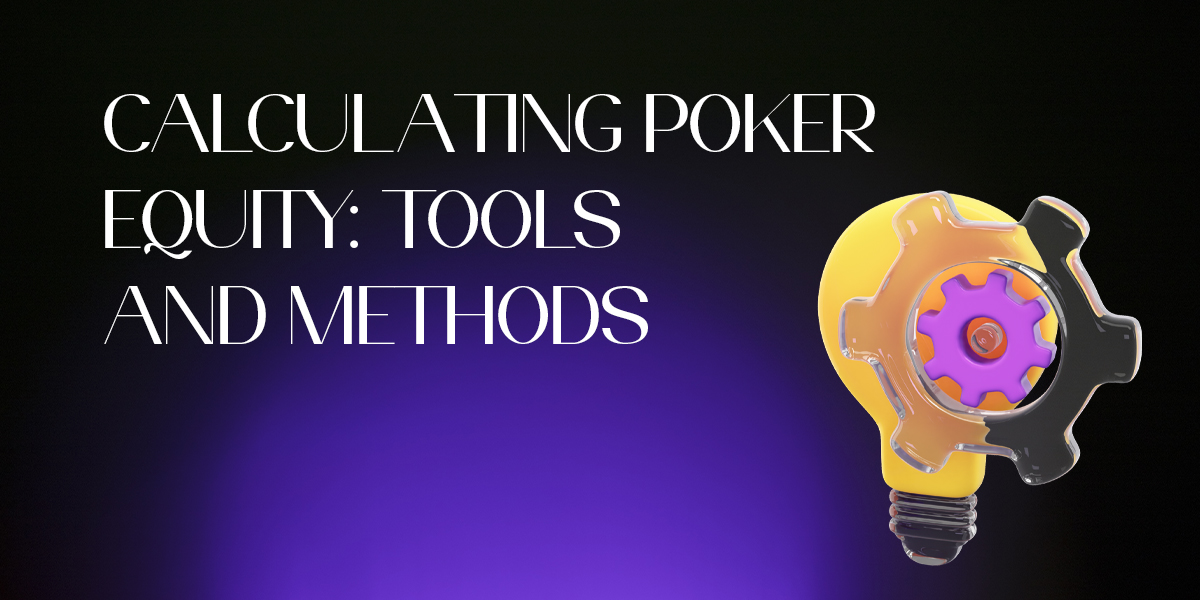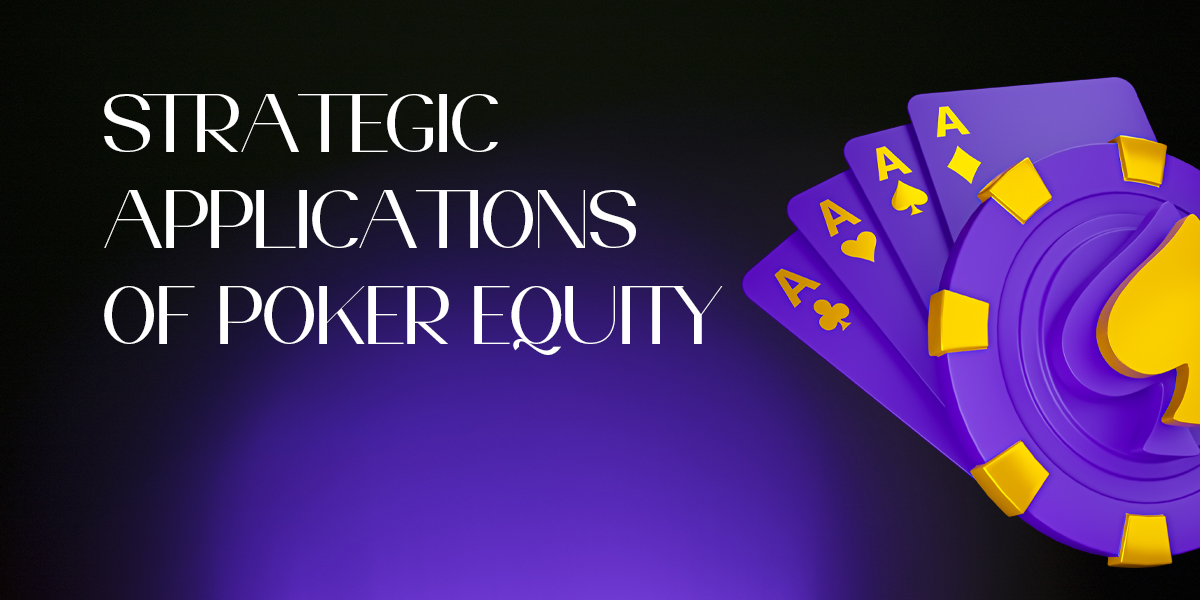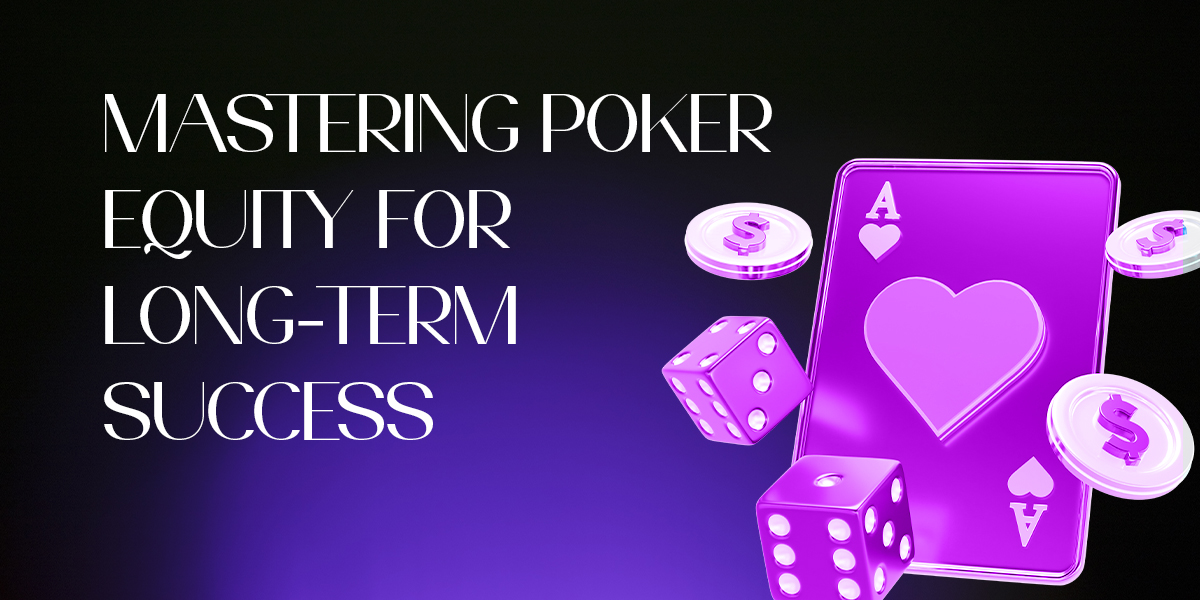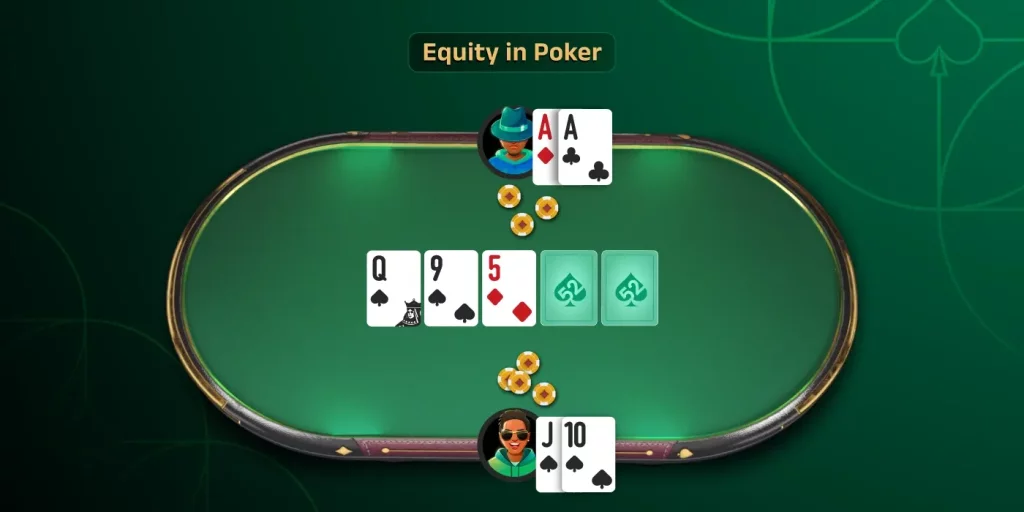Poker is a game of strategy and probability. Every decision brings you closer to either victory or defeat. The main thing that distinguishes an amateur from a professional is pot equity. This concept is the basis of actions when a player decides to pass, increase the bet or go all-in.
Why Poker Equity Is a Key to Strategic Play
What is poker equity? It is the proportion of the pot calculated based on the odds of winning. The concept helps:
- Build a betting strategy;
- Take into account the actions of the opponents;
- Adjust the game to the dynamics of the giveaway.
Understanding the success of a hand in heads-up play and fighting for multi-way pots gives you a tangible advantage at the table. Conscious money management is a skill that distinguishes a strong player from those who rely on luck.
Misjudging Hand Value and Pot Share
Many people lose money not because of bad cards, but because they misjudge the strength of their hand. This is a common mistake made by beginners. They see a pair of aces or a promising hand and think they have a win in their pocket. But poker is more than just good cards. It’s a game about probabilities and context.
Overvaluation of a hand occurs when players do not take into account the actions of their opponents. Let’s say you have a top pair. This is a strong combination, but if you have two opponents playing aggressively against you, your chances of winning are reduced. Players forget that equity depends not only on their hand, but also on the possible combinations of their opponents.
On the other hand, underestimating a hand can play a cruel trick. The player discards cards without even looking at the probability of a raise. For example, you have to draw scenarios. You don’t have a ready combination yet, but the potential of your hand is high against your opponents’ weaker cards. Without an understanding of implied odds, such opportunities are missed.
An error in hand evaluation is an unfortunate miscalculation and lost profit. You are either playing too cautiously or taking a risk without reason. Using a mathematically sound betting strategy, you will see the full picture, evaluate the real odds and make adequate decisions.
What You’ll Learn in This Guide
Every beginning player should learn how to determine his or her share of the pot and use the knowledge to make informed decisions. It is a practical tool that improves strategy and the chances of profit in the long run.
The Basics of Pot Equity
Equity is calculated based on the probability of a hand winning against the opponents’ combinations. It is a mathematical expression of the odds. For example, if you have 50% equity in a $100 pot, the theoretical equity would be $50.
The calculation takes into account the current cards in hand and possible outs (cards that can strengthen the combination). The greater the number of outs, the higher the equity. The calculation uses approximate methods like the “4 and 2 rule” and the poker odds calculator.
The Difference Between Equity and Odds
Many people confuse equity with the odds of winning, but they are different concepts. Odds show the probability of winning a hand, while equity reflects the share of the current pot. This is a more important indicator, as it takes into account the actions of the opponents.
For example, you may have a high probability of winning, but if your opponents are betting large amounts, your actual share of the pot may be smaller. Understanding the difference reduces the risk of making mistakes. Remember that equity is a tool for evaluating the current situation, while odds are a tool for predicting the outcome.
When to Use Equity in Decision-Making
If the calculated pot share is greater than the expected value of the bet, a smart move will pay off. For example, with a flush draw, you may have only a 35% chance of winning, but if your equity exceeds your opponent’s bet, further participation in the hand will be justified.
The importance of calculations is noticeable in multi-way pots with several players. Here you need to not only consider your own odds, but also understand how the actions of others affect the overall dynamics. By applying equity, you will reduce risks and learn how to make decisions that can ensure profits over the distance.
Calculating Poker Equity: Tools and Methods
Accurate equity calculation can change the course of your game. There are several approaches, from manual calculations to advanced HUD tools.
Quick Manual Calculations
Rule 4 and 2 are useful for quickly estimating the probability of a combination strengthening on the following streets (flop, turn, river):
- After the flop (before the turn). Count the number of outs and multiply this number by 4 to get the probability of the hand improving on the next two streets (turn and river).
- After the turn (before the river). Multiply the number of outs by 2 to find out the probability of improvement on the next street (river).
For example, you have a flush draw (4 cards of the same suit). You need 1 more card of the same suit to complete the combination. There are 13 cards of each suit in the deck, 9 of them are outs (you see 2 of your cards and 2-3 on the table):
- After the flop – 9 outs. Probability of getting a flush on the river: 9 × 4 = 36%.
- After turn – 9 outs. Probability of getting a flush on the river: 9 × 2 = 18%.
This rule does not give exact values, but it estimates probabilities fairly closely.
Using Poker Probability Calculators
Odds calculators are a handy tool for calculating equity. They take into account current cards, hand ranges of opponents and give instant results. Software like PokerStove and Equilab provide detailed statistics and predict outcomes for a variety of scenarios.
The advantage of calculators is high accuracy in analyzing complex situations. But such tools take time and are not always available in real time. They are suitable for analyzing played hands and learning, but at the table you have to rely on intuition or HUD tools.
HUD Tools for Real-Time Equity Analysis
HUD (Heads-Up Display) is the next level of equity analysis. Programs are embedded in poker applications and display data in real time. The HUD evaluates several parameters:
- Your chances of winning;
- Opponent stats;
- Style and hand ranges.
For example, you see that your opponent has a high aggression rate on the river. By comparing it with your own equity, it is easier to make a smart decision. The HUD automatically calculates your bankroll based on your current cards and table action.
The main disadvantage of HUD is the complexity of customization and not always clear interface. But for regular players it is an indispensable tool. It saves time and increases the accuracy of calculations.
Strategic Applications of Poker Equity
Understanding poker equity is a way to make decisions that give you an advantage at the table. Let’s look at how to apply the knowledge in a real game.
Betting and Raising with Positive Equity
When your equity exceeds the probability of losing, act aggressively. Betting and raises are the best tools to put pressure on your opponents. For example, if you have a strong draw and the pot share exceeds your current investment, aggressive play will force your opponents with weak cards to fold.
You should also bet when the odds of winning are higher than the expected value of the next card. This is called value betting – taking advantage of a strong hand. Just take into account the size of bets and the number of opponents, so as not to lose control of the situation.
Aggression with positive equity allows you not only to win more, but also to gather information about your opponents’ hand ranges. Every action they take after your bet is a new clue to analyze.
Equity in Multi-Way Pots
Multi-player banks are a complex environment for calculating equity. The more players involved, the smaller your equity. Even a strong hand becomes vulnerable if your opponents have a wide range of combinations.
In such situations, the total equity is taken into account. For example, if you have a 40% chance against one player, in a pot with three opponents your equity drops to 20-25%. This reduces your opportunities to bet favorably or to continue playing.
Adjusting Equity Expectations Based on Opponent Types
Your opponent’s style directly affects your odds. For example, equity will be higher against taiy players who rarely take risks. They often fold hands, which allows you to take the pot with aggressive play.
Equity needs to be calculated more carefully against the low-bluff players, who enter the pot with any cards. The wide range of their hands increases the probability of unexpected reinforcement. Here it is better to play from strong combinations.
Against very aggressive opponents, fold equity works stronger than the equity of your hand. Understanding their style can help you adjust your strategy and reduce your risk.
Common Mistakes Players Make with Poker Equity
Even in the case of correct estimation of the share in the bank, many players make mistakes at the table. Let’s consider the main blunders and how to deal with them.
Overestimating Equity in Draw Situations
Players often overestimate the odds of draw combinations. For example, there is only a 35% chance of completing a flush draw to the river, but many play as if winning is inevitable. They overlook:
- Possibility of a stronger hand from the opponent (e.g., a senior flush);
- Bank size and bets that don’t justify a call;
- Board texture and the actions of your opponents.
Compare the odds of improvement with the size of your bet. Analyze the board: are there no threats from a full house or big draw?
Ignoring Position When Calculating Equity
It is the position that determines how effectively you can use your equity. Players in early positions often lose money because they act blindly. For example, betting with a hand in an early position is more vulnerable than the same bet on the button, where you can see your opponents’ reactions.
In a disadvantageous position, limit your range and avoid complex decisions. In case of positional advantage, play more aggressively than usual.
Misapplying Equity in Multi-Street Play
Equity changes with each new card, but many beginners often continue the game without recalculating the odds. Common mistakes include:
- Playing with the draw on the turn when the odds no longer justify a call;
- Ignoring new threats on the river (closed straights, flushes).
Reconsider equity after each street. Use information about your opponents’ actions to refine your calculation.
Mastering Poker Equity for Long-Term Success
Poker equity is a tool for making informed decisions and maintaining control of your game. By learning the basics of poker math, you will reduce the influence of luck and build a strategy that takes into account real numbers and statistics.
Key Findings:
- Knowing equity helps you estimate your share of the pot in any situation;
- Correct bets and raises are only possible when considering the odds of winning;
- Adapting to your opponents and analyzing your position allows you to use equity to your maximum advantage;
- Mistakes with draws and multi-player banks are costly, but can be avoided through regular probability assessment.
Practice is the key to improving your betting strategy. Start applying equity to every hand, update your calculations on every street to see how the profitability of the game changes in your favor.
FAQs
What is poker equity in simple terms?
It’s your share of the pot based on the probability of winning the hand.
Can I calculate equity without a calculator?
Yes, you can estimate it using simple math, but calculators are faster and more accurate.
How does equity change throughout a hand?
Equity shifts with each new community card revealed, altering probabilities.
What’s the difference between odds and equity?
Odds are chances of winning; equity is your potential share of the pot.
Do professional players rely on equity?
Yes, understanding and applying equity is essential for advanced play.
Cassia Rowley is the mastermind behind advertising at The Bad Pod. She blends creativity with strategy to make sure ads on our site do more than just show up—they spark interest and make connections. Cassia turns simple ad placements into engaging experiences that mesh seamlessly with our content, truly capturing the attention of our audience.


